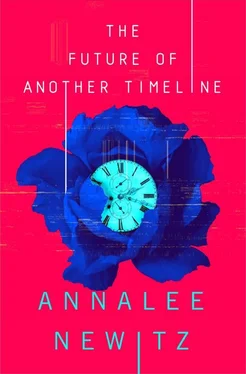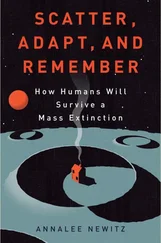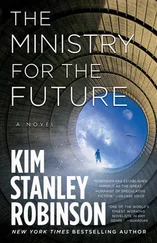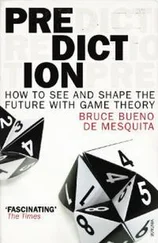I knew I was getting close when I saw domes and spires in the distance. I’d studied faded photographs of the Expo, but still got the familiar traveler’s rush when I saw it in person, rickety and real. Construction crews had spent the past year converting a swampy lakeside mess called Jackson Park into a maze of sprawling European-style buildings, artificial lagoons, and angel-encrusted facades. Today, in its half-finished state, the place looked like an insane fairy tale. Tourist brochures would call this area the White City, both for its color and for the way it embodied a spotless, shining Victorian futurism. I paused for a minute, marveling at the sheer size of the display halls, swarming with workers. Delivery wagons clattered past, piled with everything from live ostriches to bonsai trees. But this wasn’t where I wanted to land a job. I was looking for the Midway Plaisance, the long, dirty tongue of parkland that stuck out of the White City’s prettied-up face and deep into the city of Chicago itself. The Expo attractions there would inspire carnival sideshows for at least a century to come.
I took a right turn and there it was: the Midway, its landscape rough and scarred by carriage wheels. I avoided puddles of liquefied manure and passed between exhibits that looked like villages jumbled together from various locations around the world: Java, Germany, the Ottoman Empire, Japan, Austria, Samoa, Egypt. Many of the concessions were still skeletal. Ahead of me loomed the monumental “Cairo Street” exhibit, a walled-in world of restaurants, shops, theaters, and bazaars that merged to form a colonial hallucination of various cities in the Maghreb. Men with hammers climbed all over Cairo Street’s hulking “Luksor Temple.” Others were erecting two plinths covered in hieroglyphs for full pseudo-authenticity.
This segment of the Midway was almost entirely blocked to traffic by a pile of enormous steel spokes, arranged like lumber in the mud-clogged street. They would eventually converge to form the world’s first Ferris wheel, a modern mega-machine designed to dwarf the minarets of North African architecture below. Dozens of workers were ripping up ground to lay the steam pipes that would power the thing. Across from Cairo Street were the Moorish Palace and Persian Theater, both little more than wooden foundations with a few rickety beams hinting at the large crowds they would hold in a few weeks. I couldn’t believe this place would soon become an American obsession.
I poked my head around the corner from the Luksor and found a side street with one building whose slightly faded awnings gave it a lived-in appearance. Topped by gilded domes and covered in rows of bright tiles, it had a plain marquee that read “ALGERIAN THEATER.” In curly script below, the place promised to deliver “Moorish Kabils—Algerian Negre & Oulades Nai’le Dances.” Another sign helpfully elucidated: “Performance Every Hour! Dancing Girls!” A fountain stood outside, beautifully painted, full of murky rainwater. It sounded like people were drumming inside, but I couldn’t be sure.
I was turning to leave when two women materialized in the shadows of the entrance. One was tall and pale, rolling a cigarette with tobacco she’d pulled from a tiny pouch hidden in her skirts. The other was short, her jet-black hair wound into braids around her brown face. She wore a man’s wool overcoat to cover her costume, visible only as a few metallic tassels against her thick black stockings.
The tall one called out to me. “You here for the audition?”
“No, I was just passing by.” I tried to sound casual. Like somebody who wasn’t desperate for a job.
The one in the wool coat gave me an appraising look and grinned. “I like your knickerbockers. Want a smoke?”
I did.
“I’m Aseel, and this is Sophronia.”
“Everybody calls me Soph.”
“I’m Tess. You guys dancers?”
“I’m a dancer. My stage name is Lady Asenath. But I’m also a translator. And pretty much everything else, including manager for the fellow who brought this troupe over from Africa.” Aseel made a grand gesture, like she was showing off a palace full of treasures.
Soph handed me a tightly rolled cigarette. “I’m a journalist,” she said. “Did you know this is the first time these traditional dances have been seen in America? It’s incredible. I’m working on a story about it.”
I took a drag and tried not to choke. Nineteenth-century tobacco is intense. “What else do you write about?”
“Mostly I write pamphlets about how I’m fucking an angel.”
I’ve heard a lot of weird things in my twenty-five years of travel, so it was easy to keep my tone conversational. “What kind of angel?”
“I don’t mean a real angel. The goddess wouldn’t take physical form like that. But I teach women about family health and the marriage bed, and it helps if they can tell their husbands that they’re reading spiritualist tracts.”
Aseel broke in. “I ordered one of her newsletters when I was having woman problems back in Arizona. When I came to Chicago, the first thing I did was call on her.” The two women looked at each other and giggled.
“You look like a New Woman.” Soph raised her eyebrows. “What do you do?”
“Actually, I’m looking for work.”
“But you don’t dance?” Aseel was dubious. “Can you do mending? We are desperate for a seamstress.”
“Sure I can.”
Soph did a little pirouette. “Wonderful! Delightful! It’s as if the goddess herself brought you to us!”
I grinned and nodded. This was an incredible stroke of luck. I’d landed a job in the exact place where Comstock would try to crush women’s rights in a few months.
* * *
Aseel reminded me of every female boss I’ve ever had, no matter where I traveled. She wasn’t technically in charge—that honor went to Sol Bloom, a young event promoter from San Francisco who managed the entire Midway Plaisance. But everyone knew Aseel was the person with all the answers. Though she had no job title, she did everything at the Algerian Theater, from accounting and hiring to project management and choreography. And of course, she was paid less than the guys following her directions on how to build the stage.
Also like every female boss I’ve ever had, this situation annoyed the shit out of her. My second day on the job, I arrived to find Aseel chewing out the cast and crew. “What are you oafs doing? We open on May 1! The sets aren’t finished, the roof is leaking, and you’re all dancing like donkeys!” Then she yelled at everybody in Arabic for a while before whirling on me. “And how about the costumes? Salina’s jacket is in tatters!” I hung my head along with the rest of the team. We couldn’t all be as competent as the great Lady Asenath, the star of our show and scourge of lazy proto-carnies.
Still, I passed the afternoon pleasantly enough, adding modest chemises to the traditional, midriff-baring vests that some of the dancers wore with their skirts and tassels. These additions had to be transparent enough to show the women’s stomach muscles, but opaque enough to prevent nice midwestern white people from freaking out. Next there were endless tiny beads and sparkly coins to replace on jackets, pantaloons, scarves, and shoes. As I licked another piece of thread and poked it through the needle’s eye, Aseel sat down next to me and groaned.
“Long day. And we have a performance in a couple of hours.”
I was surprised. “I thought the show started in May.”
“Why do you think the costumes are already so ripped up and broken? I’ve been putting on a preview show for the past few weeks. Two bits a head. We’ve made plenty of dough and the Midway isn’t even open yet.” There was a note of pride in her voice.
Читать дальше








![Аннали Ньюиц - Автономность [litres]](/books/424681/annali-nyuic-avtonomnost-litres-thumb.webp)



